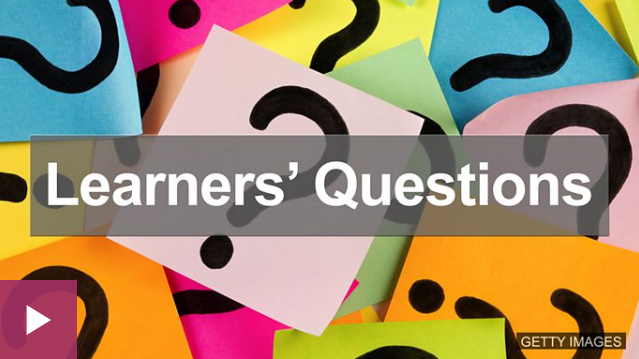Comma, semicolon, colon
Hany in Germany says: in the German language, we put the comma before the relative pronoun. Does this apply to the English language? What about the semicolon and colon and their usage?
Dan
Hi guys! Dan for BBC Learning English here with this week’s Learner Question. Find out what it is after this.
OK! This week’s learner question comes from Hany from Germany, who asks: in the German language, we put the comma before the relative pronoun. Does this apply to the English language? What about the semicolon and colon and their usage? Wow, Hany. Punctuation question, eh? Pretty difficult.
Well, commas are used in relative clauses, but only in non-defining relative clauses. These are the relative clauses which give extra information to the main clause. For example, Sarah, who lives opposite me, often accompanies me to work. Or, this book, which is in French, needs to be translated.
Commas are also used in lists to separate items. But we don’t put a comma between the last two. For example, I need an apple, a banana, a car, a dog and an egg.
Like commas, semicolons can be used to separate items in a list. But this is more common where the items are complex. For example, I need an apple from Spain; a banana which isn’t too soft; a car that hasn’t been driven on a Monday; a dog who’s only got three legs… etc.
Finally, we use colons to introduce the lists themselves. They are the punctuation which precedes the list. We can also use colons to introduce quotations or direct speech. For example, the prime minister said: “There is no need to panic.”
I hope that answers your question Hany. Thank you very much for writing to us. If anybody else out there has a question for Learners’ Questions, you can email us on: learning.english@bbc.co.uk. Please remember to put Learners’ Questions in the subject box and your name and the place that you’re writing from. Unfortunately, we can’t answer all the emails, guys, we just get too many, but we do read every single one. And for more information, please log on to www.bbc-story.com. That’s it for this week’s Learners’ Questions. Thank you very much. I’ll see you next time. Bye!
Summary
Commas
Commas are used in relative clauses, but only in non-defining relative clauses. These are the relative clauses which give extra information to the main clause. These are in contrast to defining relative clauses, which define a noun.
Sarah, who lives opposite me, often accompanies me to work.
This book, which is in French, needs to be translated.
Commas are also used in lists to separate items. Don’t put a comma between the last two.
I need an apple, a banana, a car, a dog and an egg.
Semicolons
Semicolons are used to separate complex items in a list.
I need an apple from Spain; a banana which isn’t too soft; a car that hasn’t been driven on a Monday; a dog who’s only got three legs…
Colons
Colons are the punctuation which precedes a list. They also introduce quotations or direct speech.
The prime minister said: “There is no need to panic.”
